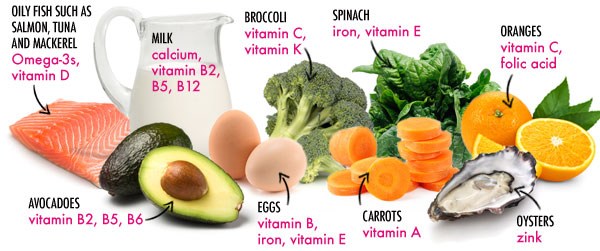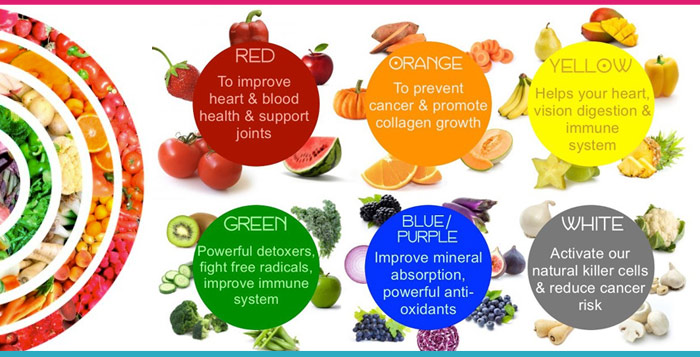Lesson 7. Plant Parts We Eat (Page 45)
- Students will identify fruits and vegetables as parts of a plant
- Students will be able to make connections between plant part function and nutritional benefits
- Students can identify at least main 2 Micronutrient (vitamin or mineral) for each example of fruit/veg in each plant part category (focus on vitamins A,B,C,D and minerals Potassium, Calcium, Iron, and Sodium).
- Students will expand on previous knowledge and explain one significant aspect of the vitamin or mineral identified in each food item.
- Students will be able to identify the five food groups, list a variety of examples found in each group, and distinguish which food groups can be found in the garden.
- Students will be able to match various food group examples with their respective parts of the plant
- Understand why each food group example is matched with a plant part.
- Students will be able to list the six main nutrients ( carbs, pro, fat, mineral, vitamin, water). and list 2 examples of each, stating the plant part, when applicable.
- Students will be able to describe “Eating the Rainbow”
Eating the Rainbow Recipes from the Whole Kids Foundation by Whole Foods Market.
Core Curriculum Standards
Reading Standards for Informational Text: (RI)
- 1.1- 6.1: Ask and answer questions about key details in a text.
- 1.2- 6.2: Identify the main topic and retell key details of a text.
- 1.3- 6.3: Describe the connection between two individuals, events, ideas, or pieces of information in a text.
- 1.7- 6.7: Use the illustrations and details in a text to describe its key ideas.
Reading Standards: Foundational Skills: (RF)
- 1.4- 6.4: Read with sufficient accuracy and fluency to support comprehension.
Writing Standards: (W)
- 1.2-6.2: Write informative/explanatory texts to examine a topic and convey ideas and information clearly.
Speaking and Listening Standards: (SL)
- 1.4- 6.4: Report on a topic or text, or present an opinion.
- 1.1- 6.1: Participate in collaborative conversations with diverse partners about topics and texts with peers and adults in small and larger groups.
Language Standards: (L)
- 1.1-6.1: Demonstrate command of the conventions of standard English grammar and usage when writing or speaking.
Next Generation Science Standards: (NGSS)
- 2-PS1-1: Plan and conduct an investigation to describe and classify different kinds of materials by their observable properties.
- 5-PS1-3: Make observations and measurements to identify materials based on their properties.
- 5-PS3-1: Use models to describe that energy in animals’ food (used for body repair, growth, motion, and to maintain body warmth) was once energy from the sun.



